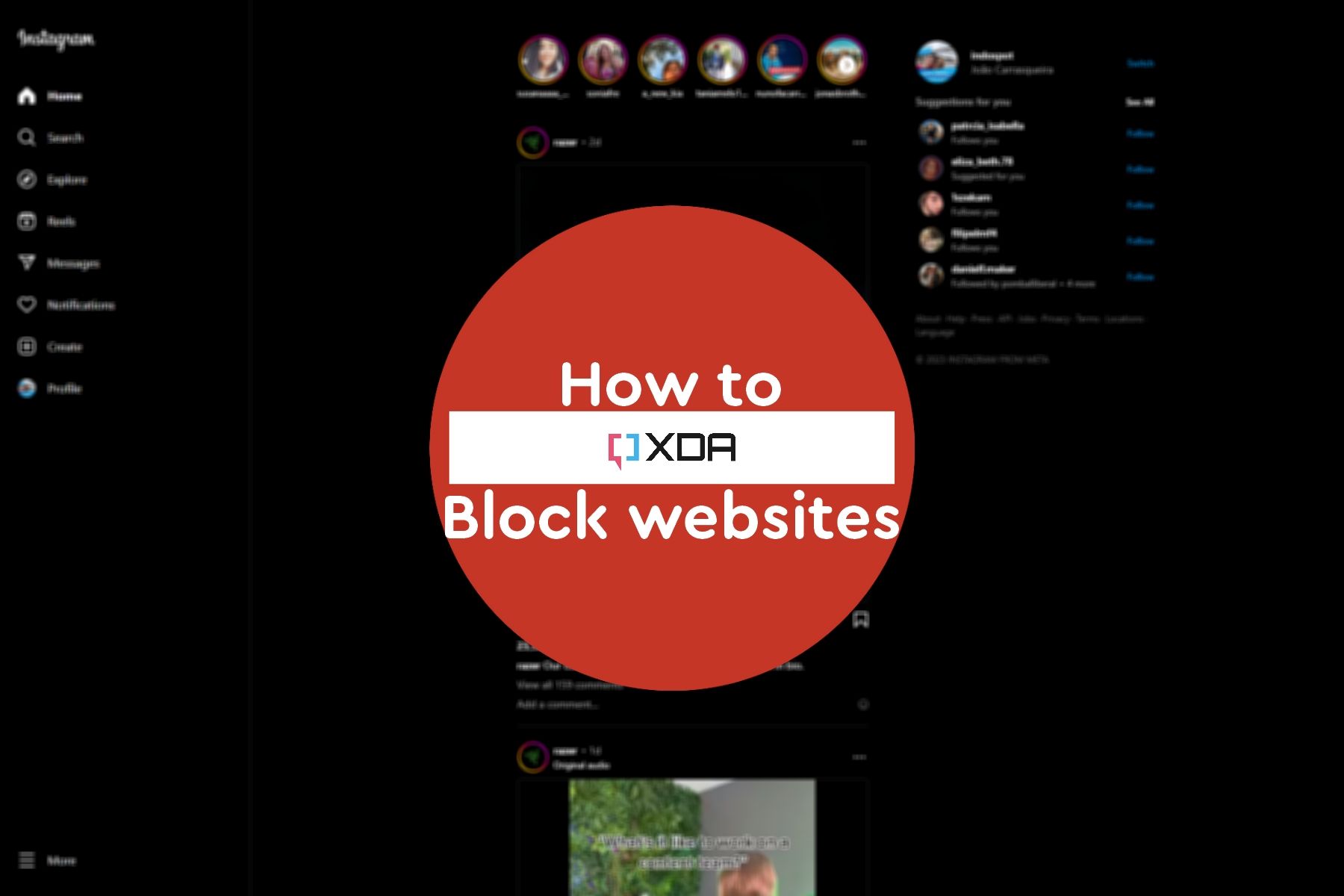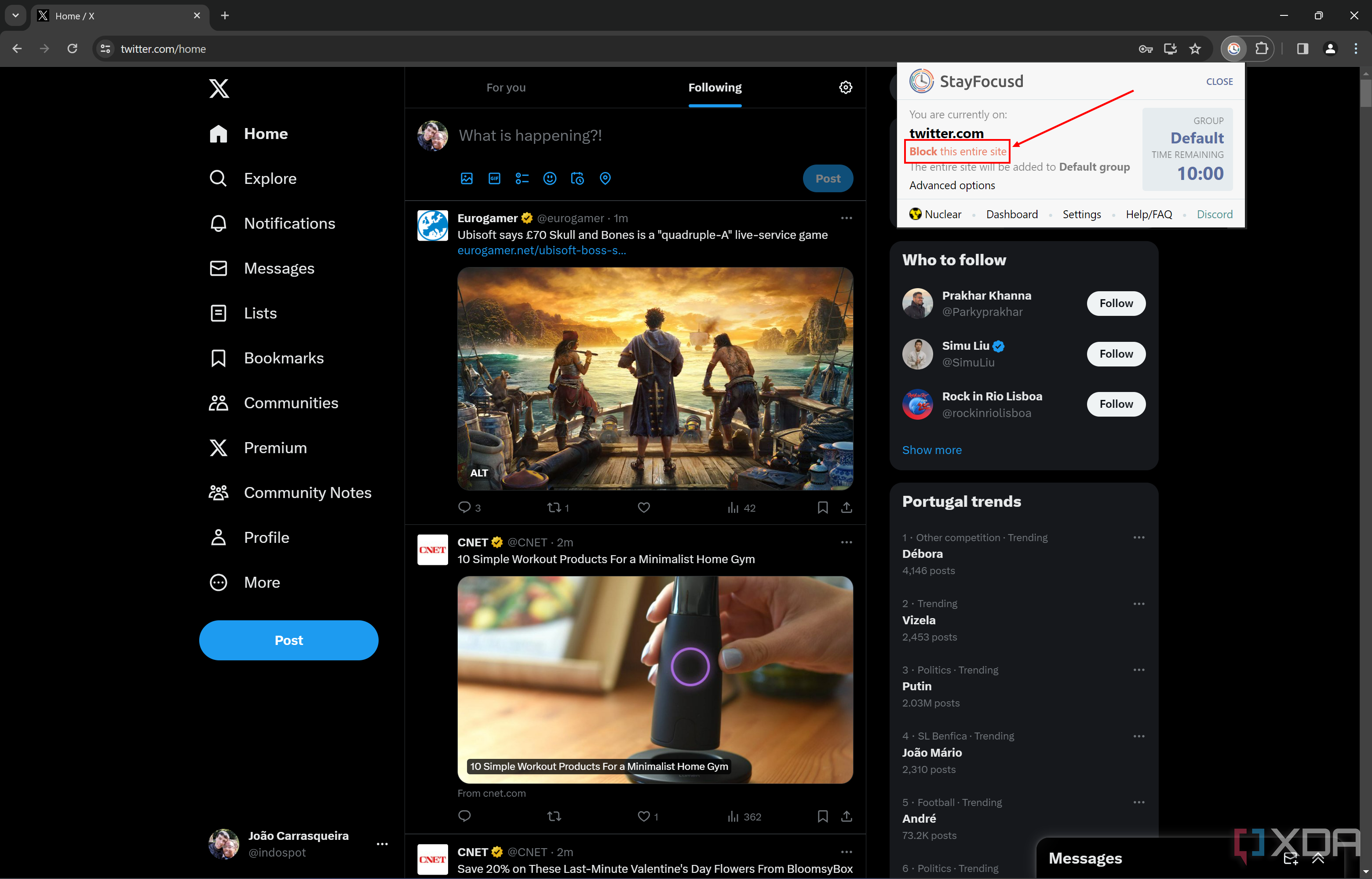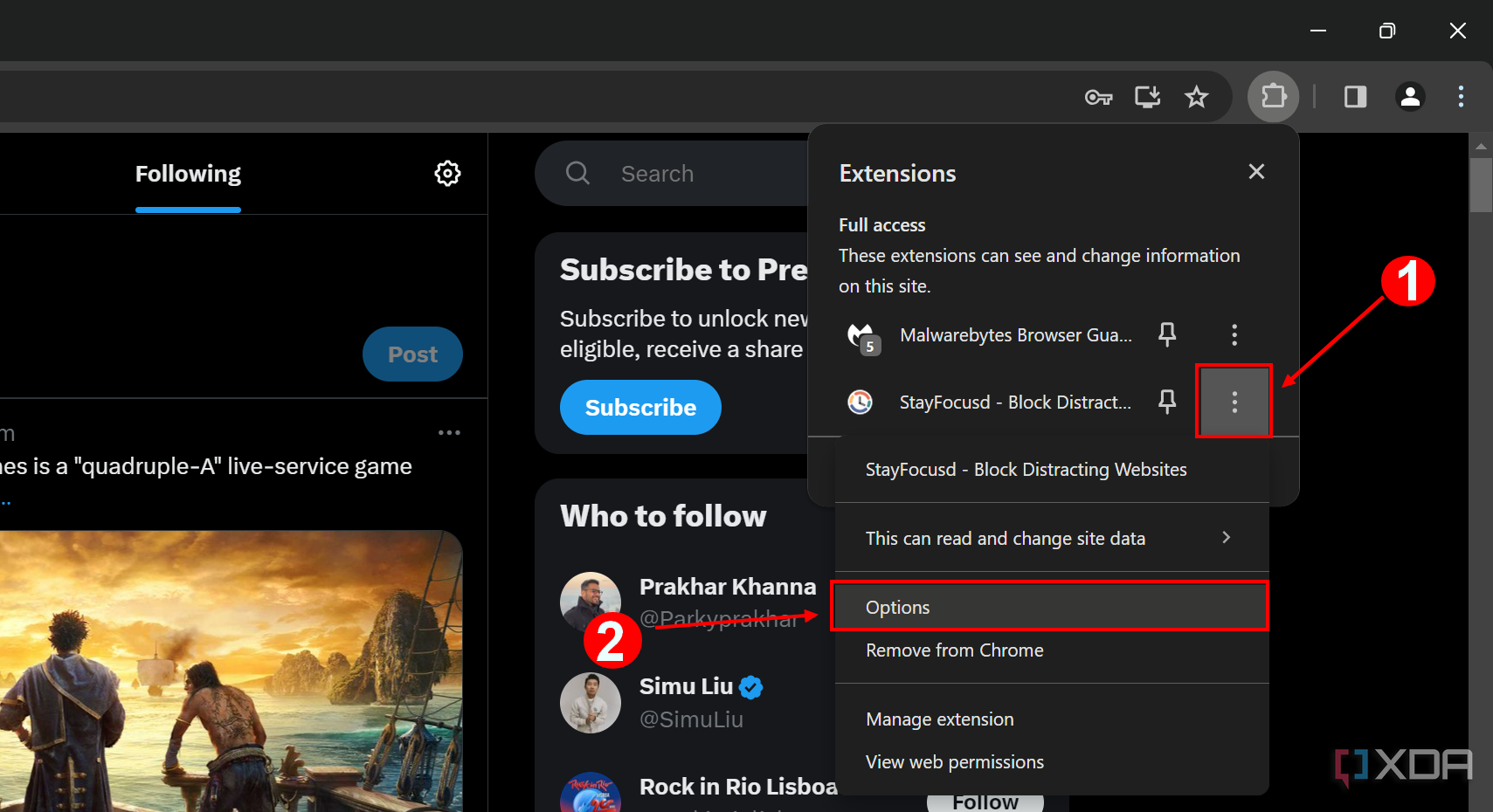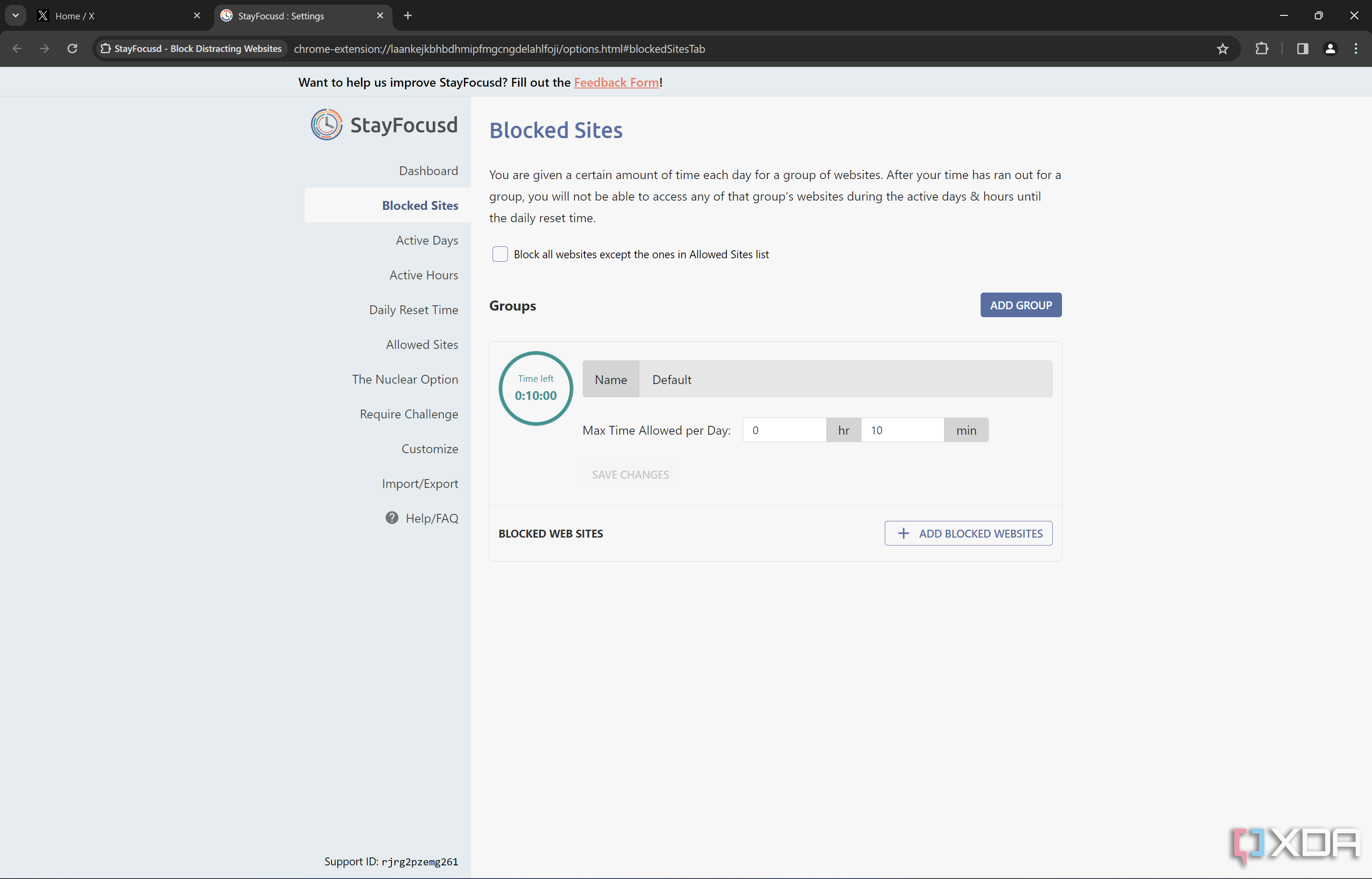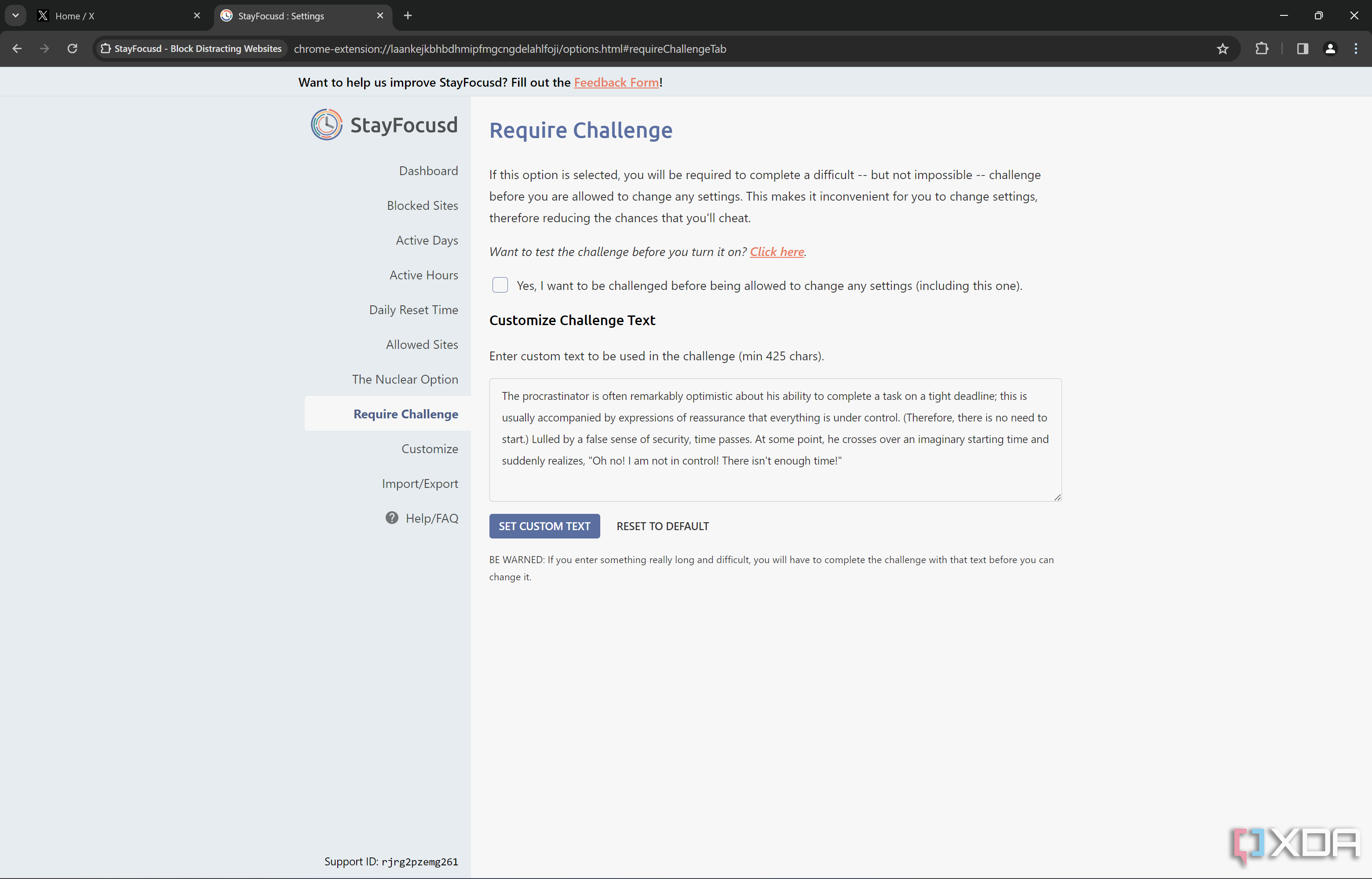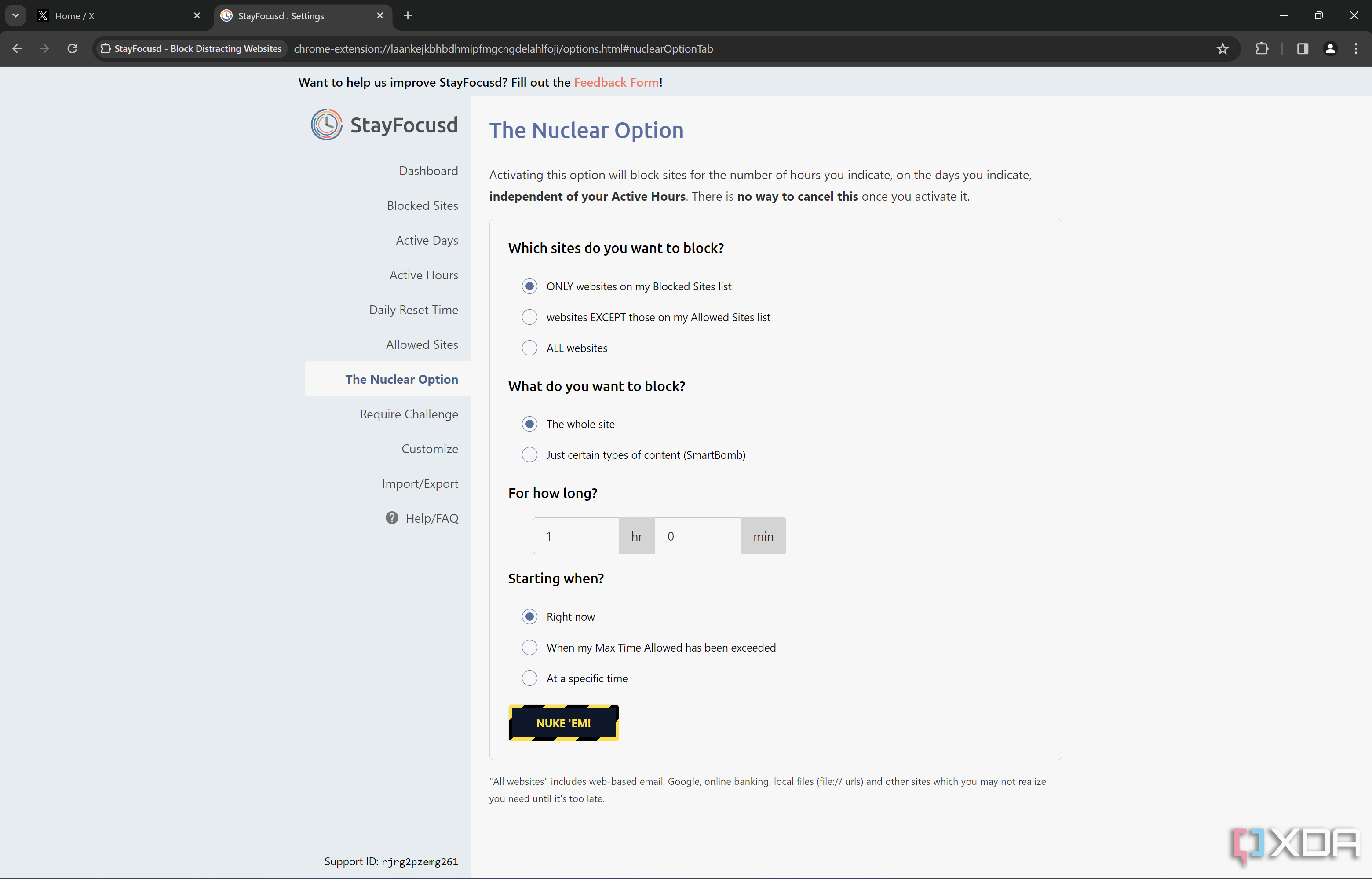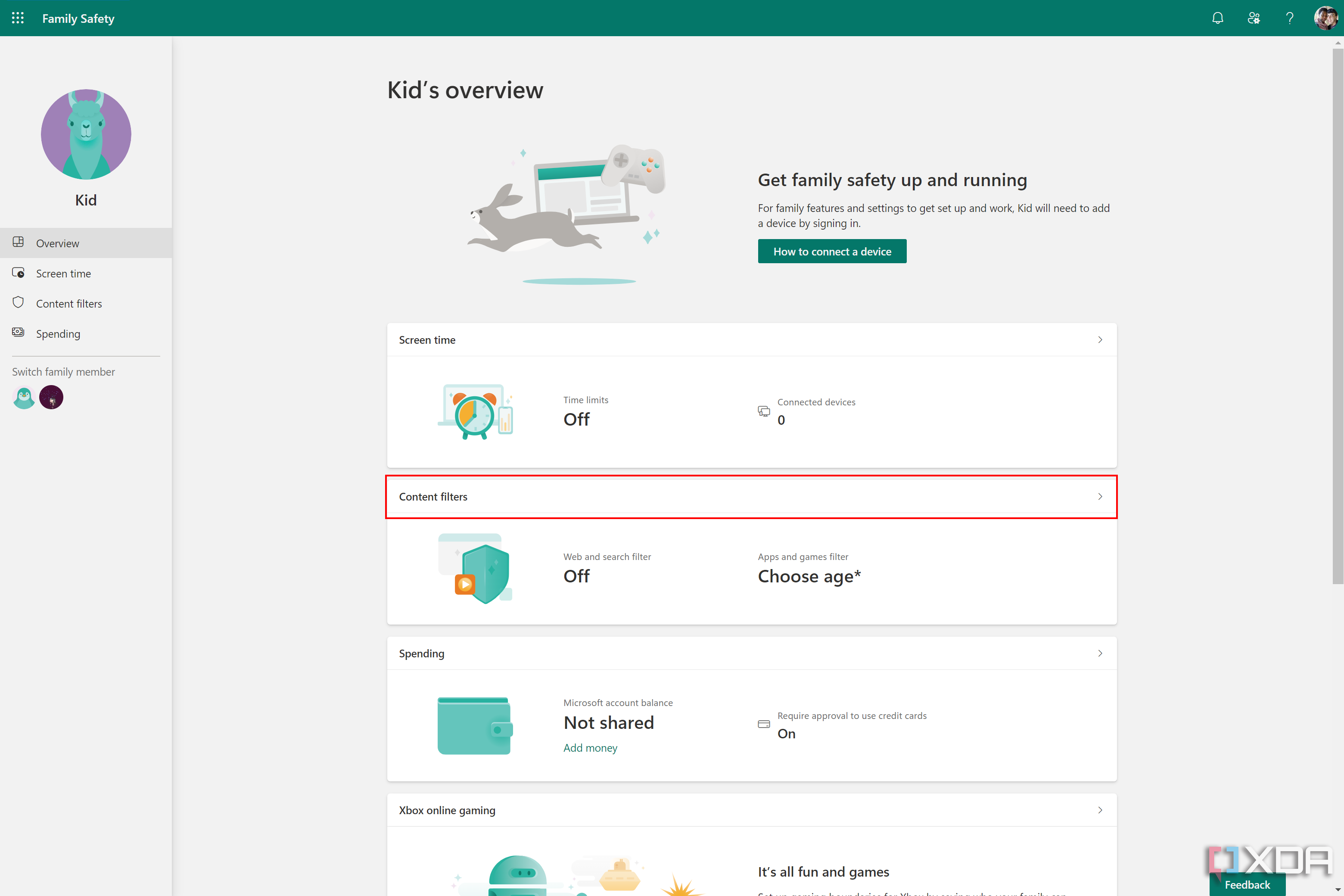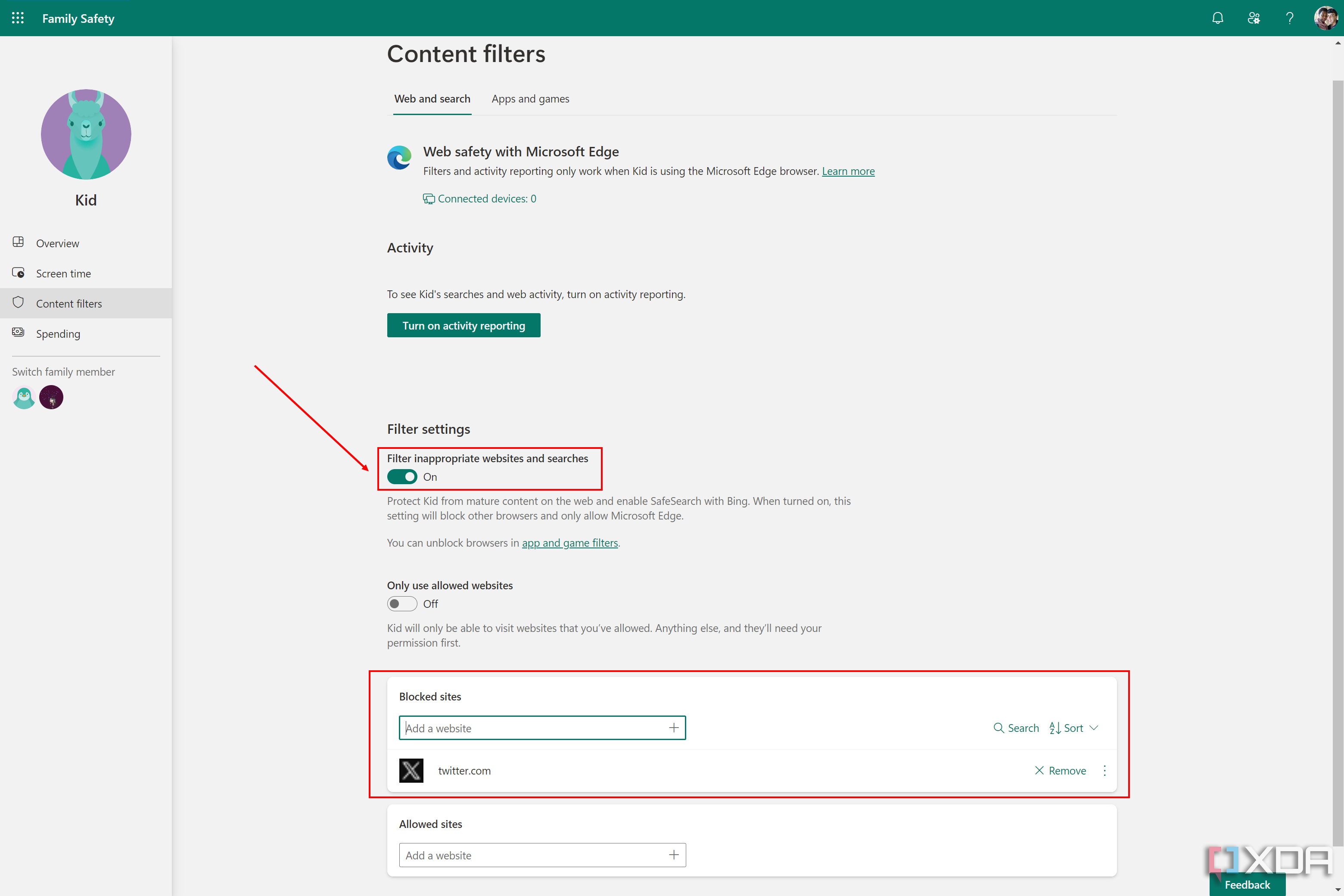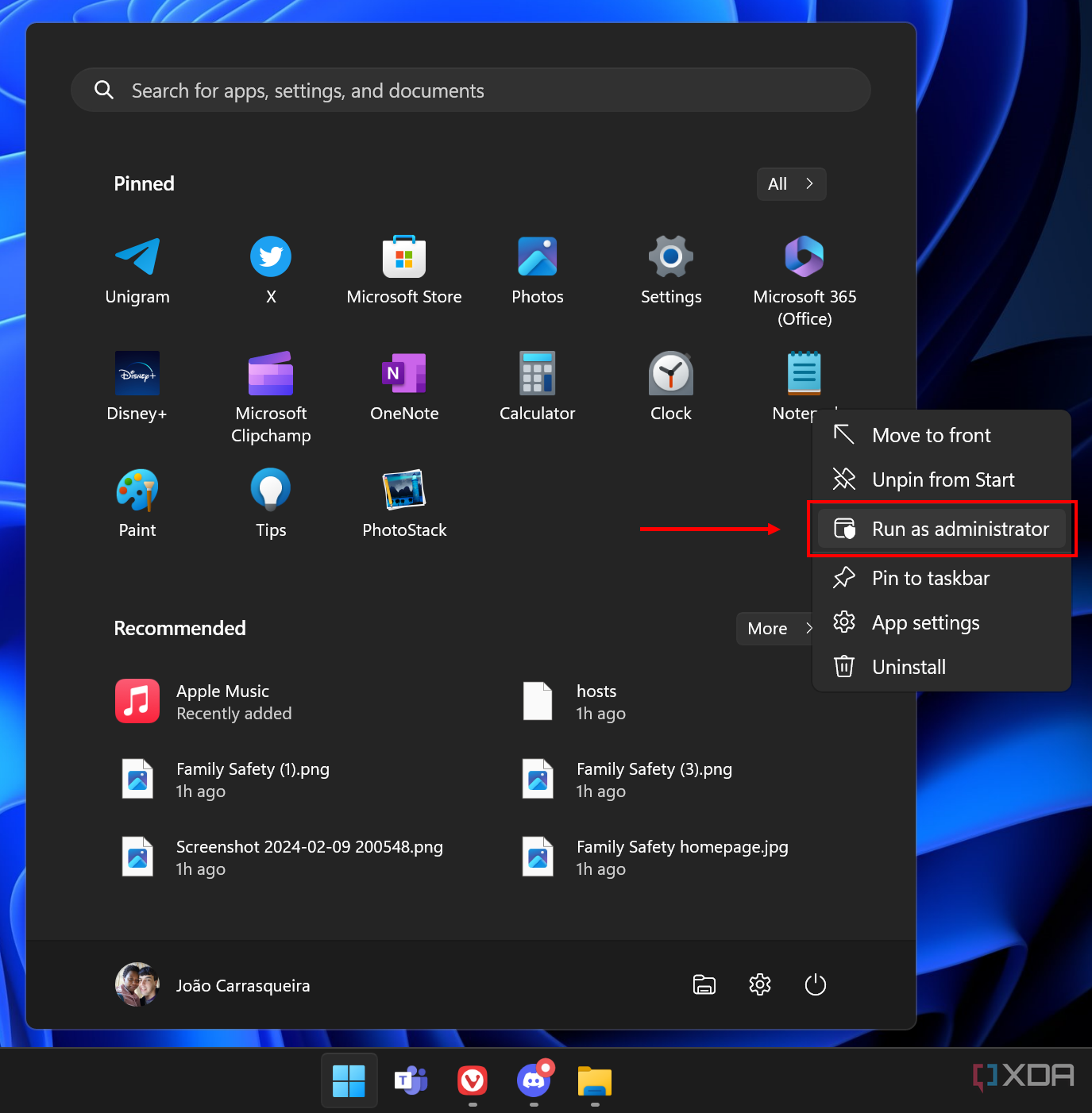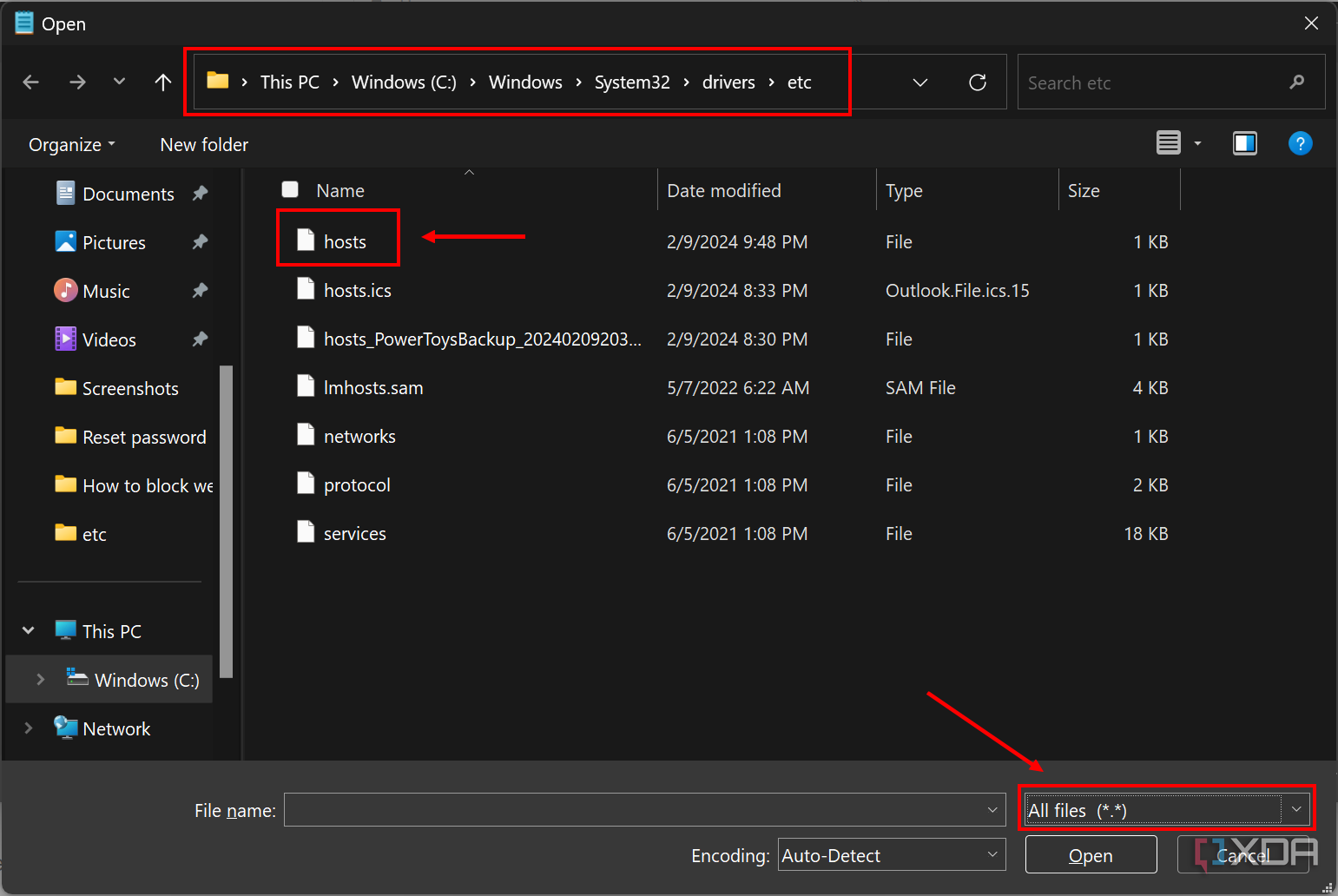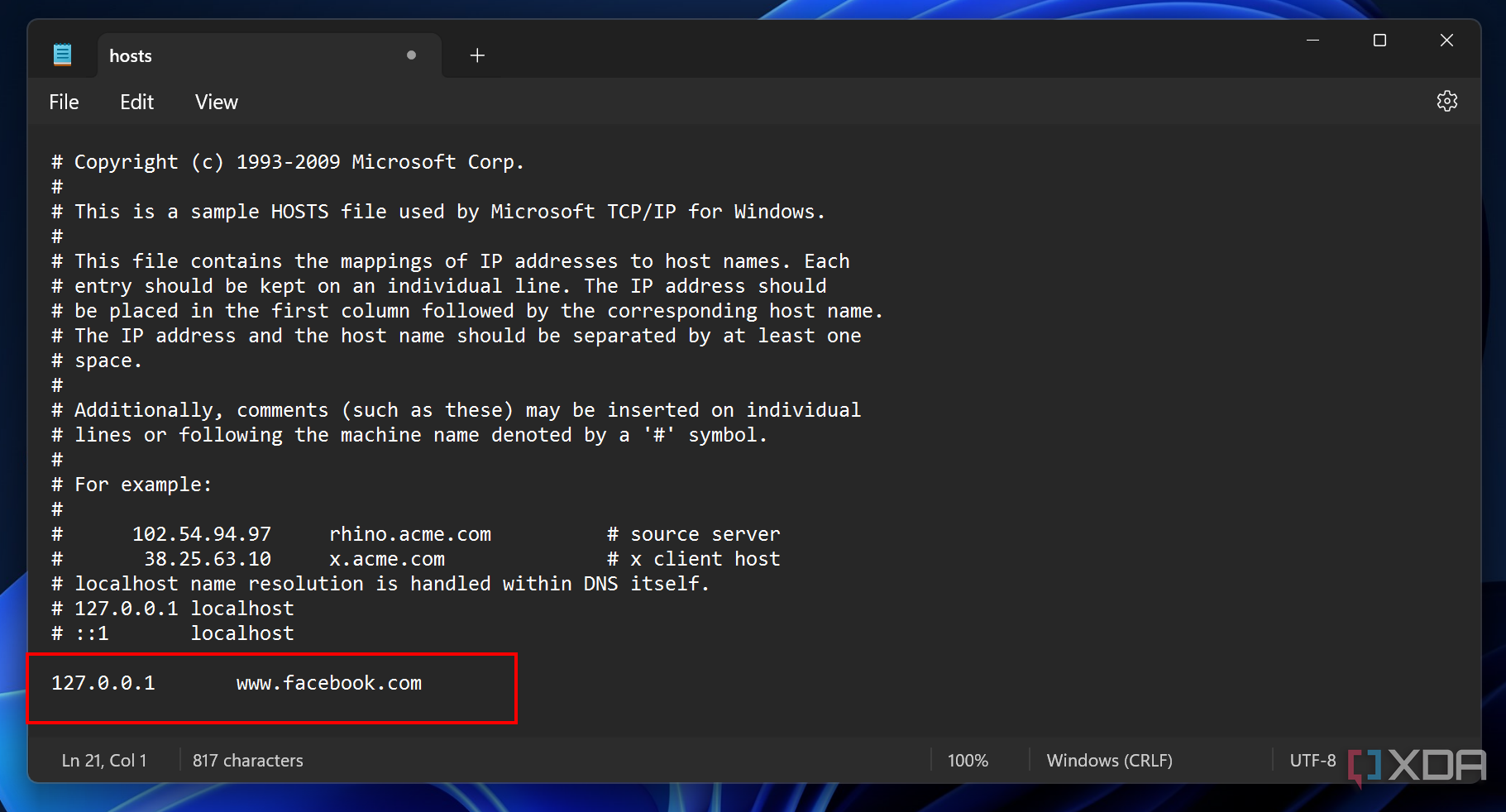The internet is the go-to source of all kinds of knowledge, information, and entertainment. It allows you to be here right now, reading this article, so it's a pretty big deal. But there's a time and place for everything, and you've probably noticed that it's all too easy to get distracted on the internet. And if you have children, you may also know how easy it can be for them to look at things they shouldn't. That means it may be time to block some websites on your browser, such as Google Chrome.
There are quite a few ways you can block sites using parental control apps or by heading into your router's settings. We'll cover a few of these methods here, though we'll bypass the router method as it varies greatly per device.
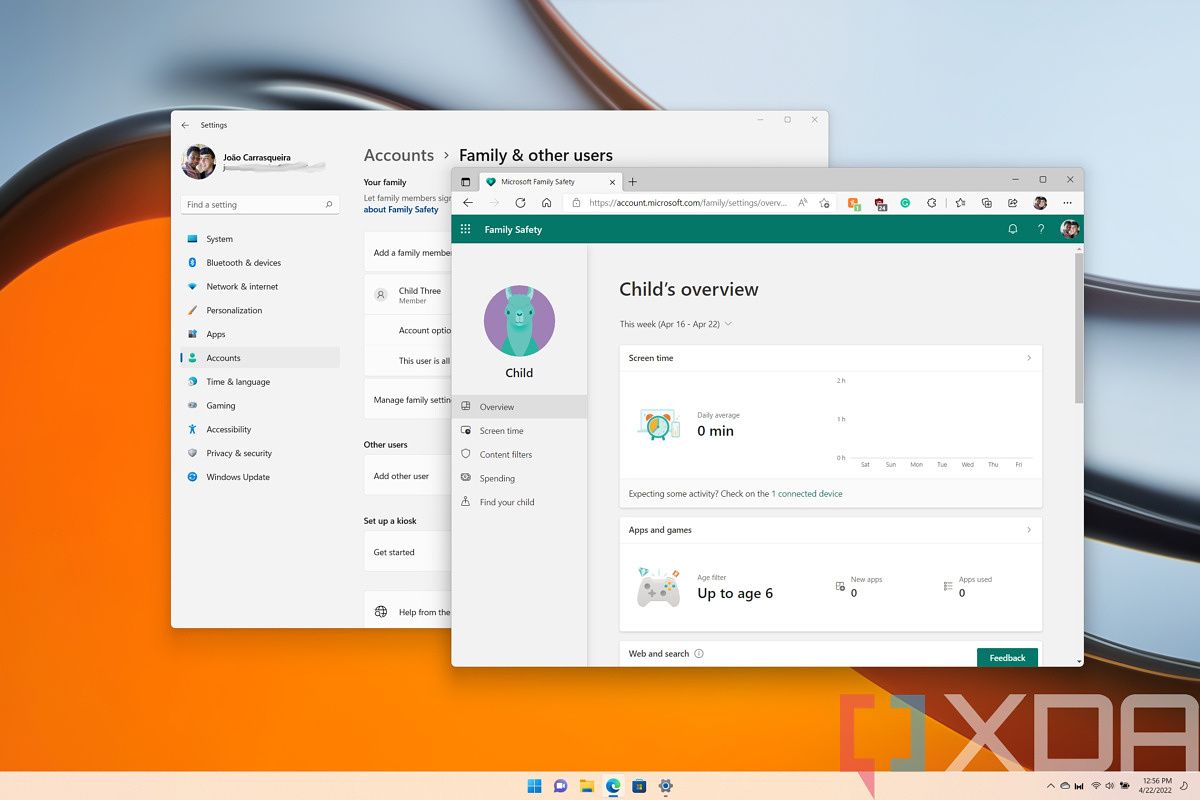
How to create and set up a child account in Windows 11
Want to share your PC with your kids? Here's how to create a child account on Windows 11 so you can give them their own space.How to block websites on Chrome with an extension
It may be a bit surprising, but most browsers, including Chrome, don't give you an option to block websites right out of the box. If you're in an enterprise setting, there are tools to block websites in your company, but as a personal user, you're going to need a Chrome extension. The good news is most browsers these days are based on Chromium, so Chrome extensions also work on Microsoft Edge, Vivaldi, and others. A notable exception is Mozilla Firefox, though.
If you want a free and full-featured extension, my recommendation is StayFocusd. A popular tool seems to be Block Site, but that one has some features locked behind a paywall. Here's what to do:
- First, you'll need to download StayFocusd and add it to Chrome (or another Chromium-based browser).
-
Once it's installed, you can access it through the extensions button on your browser's toolbar. Clicking the extension's button shows you an option to block the website you're on right now. When you block a website, you have 10 minutes (by default) before it becomes inaccessible.
-
If you want to be pre-emptive or customize some settings, you can click Settings or Options (depending on your browser) from the extension's menu in the toolbar.
Alternatively, enter chrome://extensions (or the equivalent for your browser) in your address bar, then click Details for the Stayfocusd extension and finally, click Extension options.
-
The default page is the Blocked sites tab, and here, you can set the timer for how long you want to have before blocked websites are completely inaccessible. If you want to block them outright, you can set this to 0.
-
On this page, you can also add websites you want to block before you access them. Simply click Add blocked websites, and you can add one or multiple websites in one go.
- You can also use the Add group button to group certain websites you want to block with different rules from the main set of blocked sites. For example, you can set a different timer for each group.
- There are a few other settings you may want to change, too. In the Active Days and Active Hours tabs, you can choose the time and days when websites should be blocked, which can be useful if you're trying to avoid getting distracted during work hours, but not outside of them.
-
You may also want to head to the Require challenge tab. Here, you can require users (including yourself) to complete a typing challenge before any changes can be made to the settings.
-
Finally, you may want to check out the Nuclear option tab. This setting lets you instantly block websites for a set period of time without the option to stop it. You can set it to block all websites (in case you shouldn't be using the browser at all), block only the websites on your blocked list, or block all websites except the ones on your allowed list.
- Once you've set it up, you can activate the Nuclear option at any point from the toolbar button.
Even if you block the Chrome Extensions page and set a challenge to change any settings, it is still technically possible for a user to uninstall an extension, since they're usually shown in the toolbar. Some browsers, such as Vivaldi, let you hide the extensions from the toolbar, which makes it a bit harder to do this. Most browsers also let you hide the extension itself from the toolbar and into the collective extensions menu.
Users can try to install or use a different browser, too, so this solution isn't perfect. But you can install the extension on any Chromium-based browser, and these days, that's most of them. Still, this solution is mostly to help yourself if you're getting distracted, and it should also work on less tech-savvy users that don't know how to work around these settings.
How to block websites with parental controls in Microsoft Family Safety
Another way to block websites that may be more effective is using the parental controls in Microsoft Family Safety. To do this, you'll need to have set up a family group and add a child account to it. You can set up a child account from the Microsoft Family website if you haven't already.
Something else to note is that your child will have to be using Microsoft Edge instead of Chrome for this blocking feature to work. Edge is very similar to Chrome in terms of functionality, so this may be a worthy tradeoff.
Once you've done that, you can follow the steps below to block websites:
- Go to the Microsoft Family website (linked above).
- Click the child you want to block websites for.
-
Click Content filters.
- Enable the toggle labeled Filter inappropriate websites and searches.
-
Add websites to the list of blocked sites as you see fit.
This kind of content blocking works on Windows 11 (and 10) PCs, Xbox, and Android phones, but they will have to be using Edge, as mentioned above. Once it's set up, this filter will also block other browsers from running, so you can rest assured your kid can't circumvent your rules.
How to block websites using the hosts file
One other way to block websites on a specific computer is to block the computer from accessing it altogether. A way to do this is by editing the hosts file, which is on every Windows installation. However, you'll need to have administrator privileges on the PC to be able to do this. Here's what you need to do:
-
Find Notepad in your Start menu, right-click it and choose Run as administrator.
- Click File and then Open.
- Navigate to C:\Windows\System32\drivers\etc and in the bottom right corner, change the Text document (*.txt) dropdown to All files (*.*).
-
Select the hosts file.
-
You'll see a couple of domains listed. To block a website, add a new row with the same overall format, but without the # sign, and enter the URL you want to block. For example, here's how you'd block Facebook (www.facebook.com):
-
Add as many websites as you want using this format and they'll be blocked on your PC.
Based on our tests, some sites, such as Twitter, may not work by simply entering the URL.
- Save the file and close Notepad.
Other solutions
There are still other possible solutions depending on your use case. If you know how to access your router's settings, you can also block certain websites for your entire home network, which may be harder to work around. But it's also harder to create those blocks and it varies depending on your router.
In enterprise settings, Google Chrome and Microsoft Edge can use the Windows Group Policy Editor to set block and allow lists with up to 1,000 URLs of your choosing. Open the Group Policy Editor, find Google Chrome (or Microsoft Edge), and use the Block access to a list of URLs policy to block the websites you want. You can also use the Allow access to a list of URLs to create exceptions for certain pages in a domain.
With that being said, the options we've gone into in this article already give you a few methods that should be enough for your needs.

